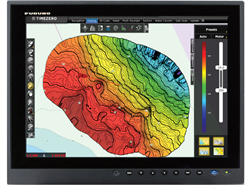
DFF-3D MultiBeam Sonar is now compatibility with TZ Professional!
Optional PBG and DFF-3D modules connected to the new Furuno DFF-3D MultiBeam sonar:
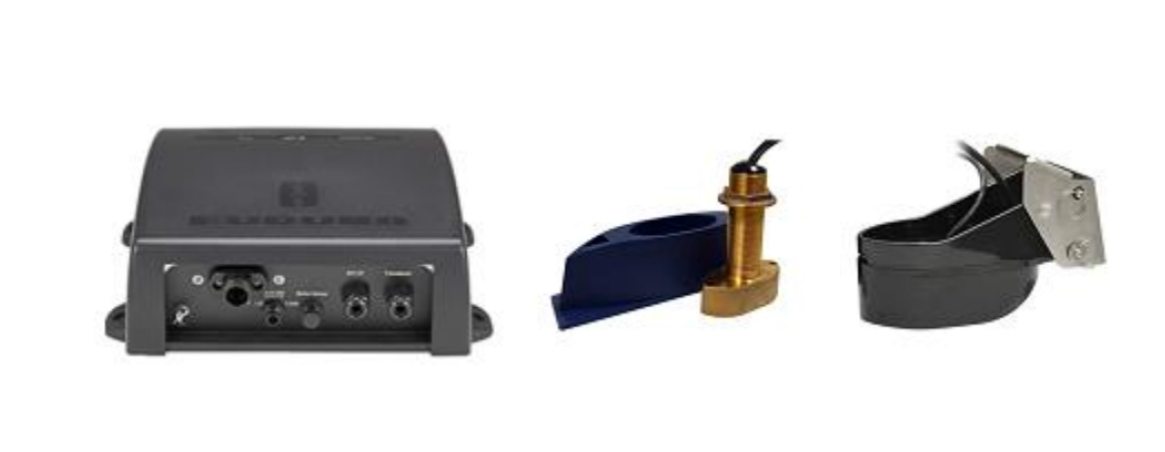
TZ Professional can be setup to display the various sonar screens such as Section, Multi-Sounder, Side Scan or Water Column. Video
.png)
Note: Refer to the PPT for a brief explanation of each view. When coupled to the Furuno SC30, the DFF-3D can provide multiple depth points simultaneously to TZ Professional. This allows you to cover a much larger area in a shorter amount of time compared to a traditional sounder. Below is a comparison between PBG created with a DFF-3D on the left (at up to 50 depth points per second), and PBG created with a regular (single beam) sounder (at 1 point per second):

Note: The coverage area (swath covered in one pass) varies according to depth, and is about twice the depth. In other words, in 100 meters, the coverage area will be approximately 200 meters (port to starboard). The DFF-3D can detect and generate bathymetry data down to 200 meters (the DFF-3D operates at 165Khz to detect fish targets and bottom). When you are operating in depths deeper than 200 meters, it is possible to switch the PBG source from the DFF-3D Multi-Beam to a regular low frequency single beam sounder:
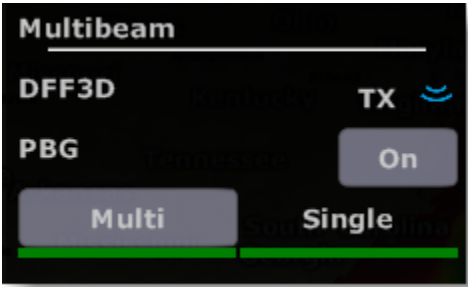
The DFF-3D PBG data points are recorded in the same PBG user database as points that would come from a regular single-beam sounder. This means it is possible to display PBG Points from the data that has been recorded by the DFF-3D. TZ professional will also “extrapolate” the depth data in real time on the screen and customers can use the PBG Brush Size feature to either increase or decrease the sharpness of the bottom data. Increasing the brush size will increase the extrapolation (“widen” the data on screen) and smooth it. Alternatively, decreasing the brush size will decrease the extrapolation and reveal more details or higher resolution, which is useful in shallow water:

It is recommended to leave the default settings (brush size = 19) for areas in between 100 and 200 meters. If the customer is working in shallow area (30 meters of below), it is recommended to set the brush size to 5. Although the DFF3D has an internal motion sensor located in the transducer, you will have to use an SC30 connected via the Actisense NGT1-USB Gateway to record PBG data with the DFF-3D. When connected to TZ Professional, the SC-30 should be used as the primary source of position, heading and motion data. Below is a connection diagram example of a direct integration in between TZ Professional and the DFF-3D:
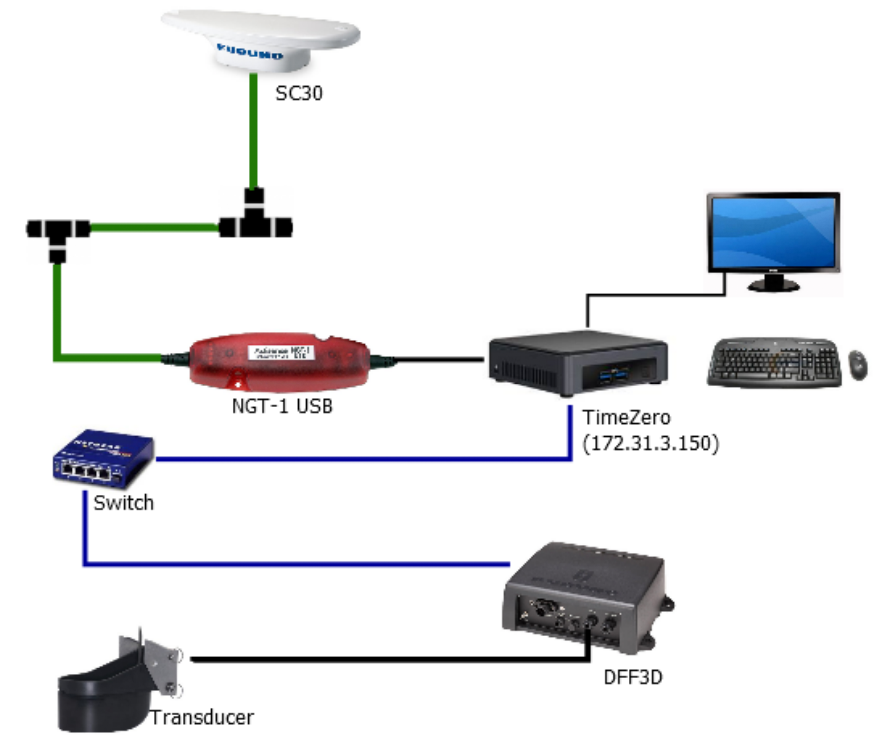
Note: Even if there is only one Ethernet device, it is highly recommended to use a network Switch. IMPORTANT: It is critical to properly adjust all the transducer and sensor offset/time lag settings from the MFD or from TZ Professional if the DFF-3D is directly connected to the PC:
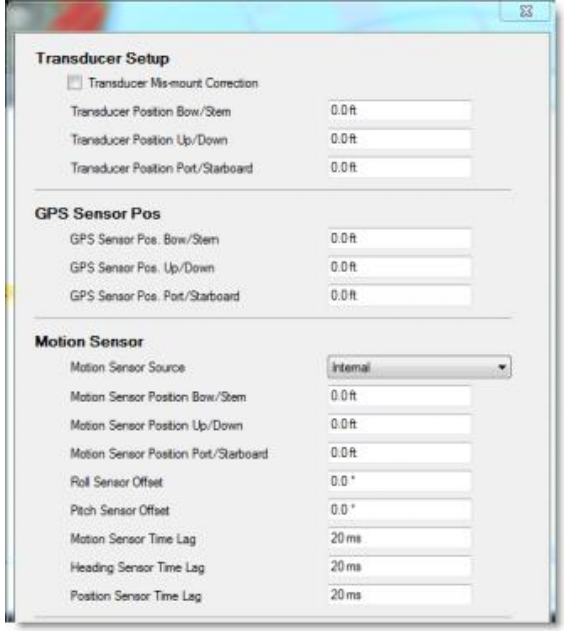
Carefully review the DFF-3D Installation chapter located in the TZ Professional User Guide:
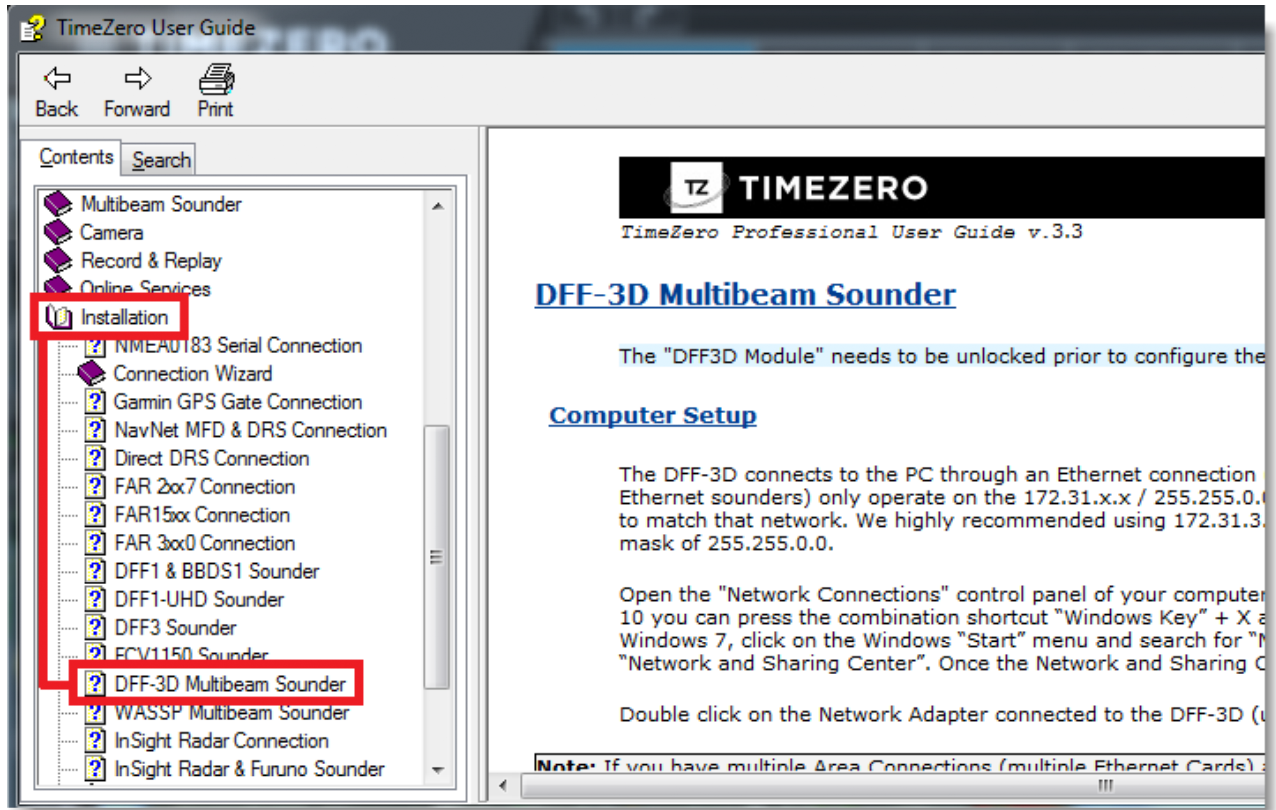
Clear details are provided on how each setting should be adjusted, with practical examples.
FLIR M200 Compatibility
TZ Professional V3.3 is compatible with the FLIR M200 (M232). This camera is the smallest and most affordable FLIR pan and tilt marine thermal night vision camera. The M232 uses IP video technology and simplifies installation by eliminating extra video signal cables. Unlike the FLIR M-Series and M400, there is no need to install an AXIS video encoder to display the picture in TZ Professional. The FLIR M232 can be directly plugged into the network and TZ Professional will be able to display the camera video feed and control it.
Marport Trawl Positioning Integration (Beta)
TZ Professional V3.3 can connect and receive trawl door position from a Marport system (using the “$PMPT,PS” sentence). Two trawl doors can be displayed in TZ Professional (position, trail and Speed vector):
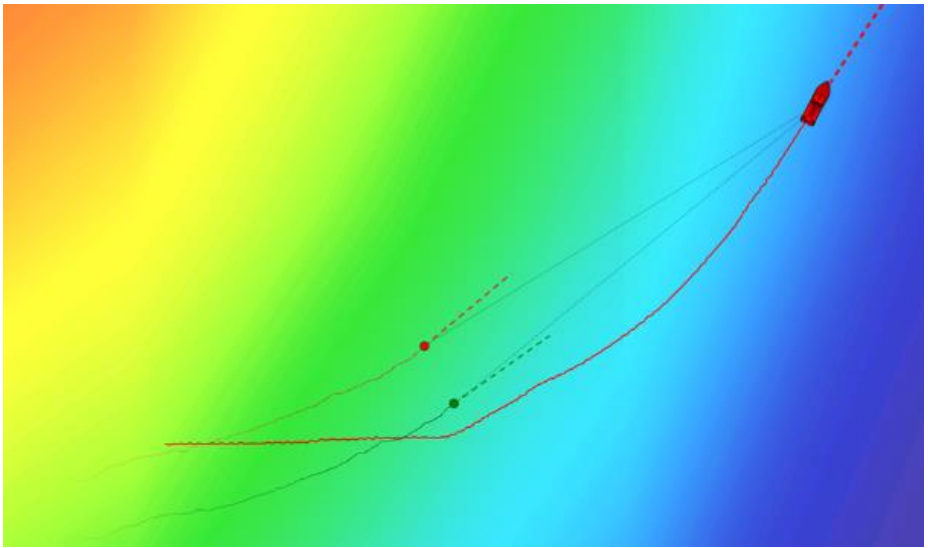
Please note that this feature is released as a free beta (no module purchase required at this time) to get feedback from customers. Eventually, the Marport Trawl positioning integration will require an unlock module.
Note: See PPT for more information and screenshots of the Marport integration
Marks and Objects Database Optimization
This new version of TZ Professional has been optimized to better handle large user databases. Objects such as marks, areas, circle, lines, etc. now load up to 10 times faster.
Misc. Features
- The Route Safety and Anti-Grounding Cone can be setup to alert you by using more types of vector chart objects:

- It is now possible to import Olex user data (marks, lines, tracks, and areas) and allow the user to benefit from the many TZ Professional data management tools:
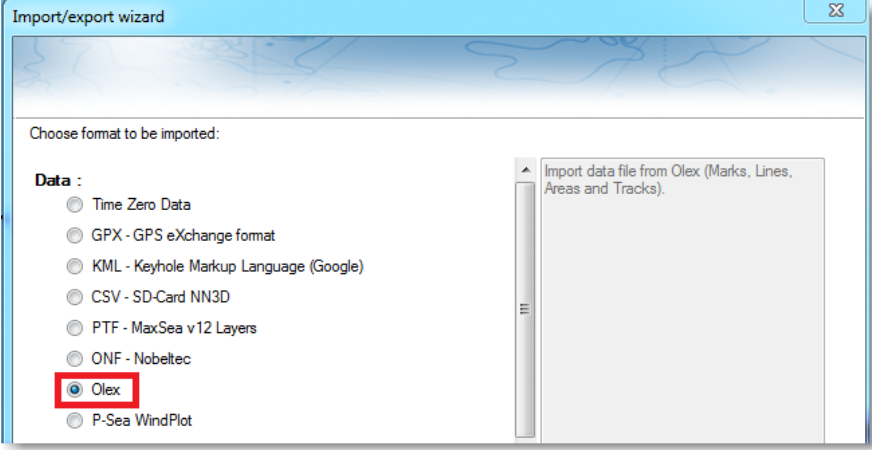
- It is now possible to open the closest Tide Station from the NavData box by right clicking on the box. - WPL and RTE sentences must now be manually configured (Connection Wizard -> Output Configuration) to send Marks and Waypoints to compatible GPS via NMEA0183.
- The Radar Color palette has been improved to display the radar echo with more contrast. - GRIB files containing missing wave direction information (only height), can now be displayed in color on TZ Professional. Previously, wave data was not displayed at all, even if the height data was available.
Read more about DFF-3D (for smaller fishing boats)
Read more about TimeZero Professional

 English
English